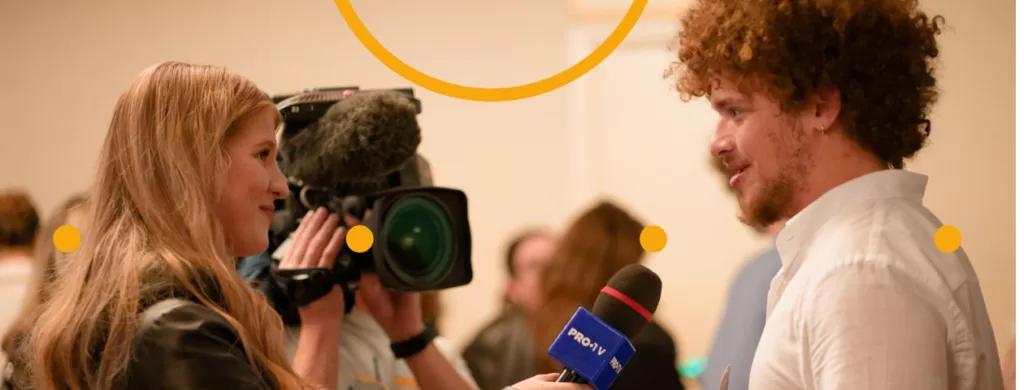
What are the key administrative steps involved in the Erasmus+ program? And how are these contributing to an exponential increase in paperwork and bureaucracy for both students and international office staff?
Before the coronavirus outbreak, the Erasmus+ program was expected to support two million higher education students, including 450,000 traineeships, 650,000 vocational education and training students, and 800,000 lecturers, teachers, trainers, and education staff by 2020.
The valuable benefits of the Erasmus+ program for both students and staff undergoing exchanges made this European project one of the most successful initiatives of the European Commission.
However, the increase in the number of students interested in international study and partaking in Erasmus+ brings an extra burden of administration and paperwork for staff in international offices.
The manual processes to manage mobilities are currently inefficient and require intensive effort from administrative staff to effectively manage large volumes of data and a multitude of documents.
In this blog, we highlight the five steps involved in the Erasmus+ program and how these create additional paperwork and bureaucracy for both students and staff:
Step 1: Research
Firstly, the student must conduct their own research on which country and institution they want to study at, as well as identifying the course they want to undertake.
The options available are often published by the international office as a spreadsheet list, which the staff need to compile and keep up to date to help students filter their search.
The student is then required to choose at least three options for host institutions to include in their application. Once this choice has been finalized, the student must fill in a paper application form with personal and academic details and attach the required documents.
Step 2: Application
Students planning to study abroad must prepare in advance and complete a paper application form that should be handed in to their home university’s international office, notifying them of their interest to study abroad.
The student’s exchange application usually includes the following information and documentation:
- At least three choices of possible host universities
- The student’s provisional choice of courses
- A copy of their transcript of records
- Language and academic certificates
- A motivation letter
- Reference letters
- Curriculum vitae
Students may also need to demonstrate their language ability or in some cases provide a portfolio of work.
The process of applying to an Erasmus+ program is extremely bureaucratic and outdated, considering that students need the ability to print forms, sign them, scan them, and then send the scanned application forms along with the required documentation to their respective institutions.
In addition to preparing their application, students need to plan to meet with their Erasmus+ coordinators in advance to clarify the processes for both home and host institutions, including bursaries, additional documentation, and next steps.
Step 3: Selection and nomination
Once the application form has been submitted, the international office of the home institution will evaluate the application for eligibility and rank it according to the student’s academic merit, motivation letter, reference letters, and any experience if applicable.
If students cannot be placed in one of their three choices during the first round, a second placement will be provided by the international office. If they cannot be assigned a host university, then the international office will contact the student by email, inviting them to choose three destinations from a list of universities with available places.
All applicants are then notified of the outcome of their selection by email by their home university. They will also receive a selection letter and the terms and conditions. If students decide to accept the selection offer, they must sign the terms and conditions and return them to the international office within the established deadline.
Once the international office receives the signed terms and conditions, they will then contact the international office of the host university to confirm the student’s nomination.
This initiates another application process (including more required documentation) with the host university that students need to follow to secure their place.
Step 4: Learning agreement
Once the student has been accepted by the host university, they must choose the modules they plan to complete and sign a learning agreement.
Students must work with their course leader or academic contact to find modules equivalent to those they would have taken if they remained at their home university.
After the modules are confirmed, the learning agreement has to be signed by the student, their Erasmus academic contact at the home university, and the person responsible at the host university before their study exchange begins, so that they get official recognition of the credits they study abroad.
If there are any changes to the initial learning agreement, this must be reviewed and signed again by the three parties involved in the exchange.
Step 5: Grant agreement
Finally, once the international office receives the confirmation that the student has been accepted by the host university, their completed learning agreement, and their bank details, the international officers will start the paperwork that students must complete in order to receive their Erasmus+ grant.
The home international office must receive documents before, during, and after the mobility confirming the attendance and completion of modules in addition to the signed grant agreement to allocate an Erasmus+ grant to the student.
As a result of the current Erasmus+ processes, many issues can arise. Problems include loss of documents, unsigned items, and high levels of stress for both students and international officers trying to manage and process the applications of hundreds of students within the deadlines.
All these administrative processes present a barrier to institutions who want to increase international mobility. To address this challenge, the EU–funded project, Erasmus Without Paper (EWP), has been introduced to bring Erasmus+ administration into the 21st century by going digital.
To learn more about the EWP initiative and how to implement it at your institution, download your free copy of the Erasmus Without Paper: How to Make it Happen white paper.
QS Unisolution: EWP technology partner
QS Unisolution is an official technology partner of the EWP project, which is funded by the European Union Foundation. Our MoveON solution is designed to support the changes introduced by the European Commission in Erasmus+ to help clients connect their mobilities with the Erasmus Network.
MoveON is equipped to exchange all data with the EWP Network so that staff can continue to manage all data in the MoveON solution, making administration easier, quicker, and more efficient. The solution also helps to manage workflows for Erasmus+ and gives users the ability to use the ready-made Erasmus-compliant templates such as the Learning Agreement and Grant Agreement.
For more information, please contact [email protected].



